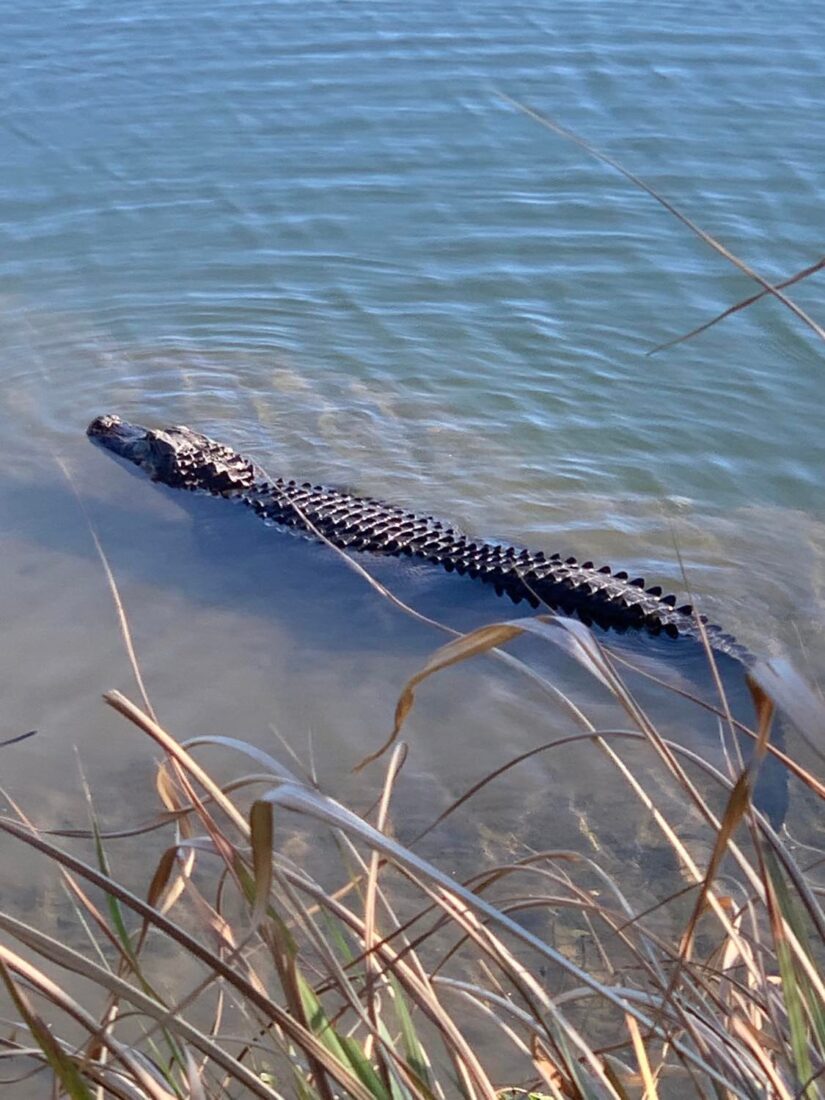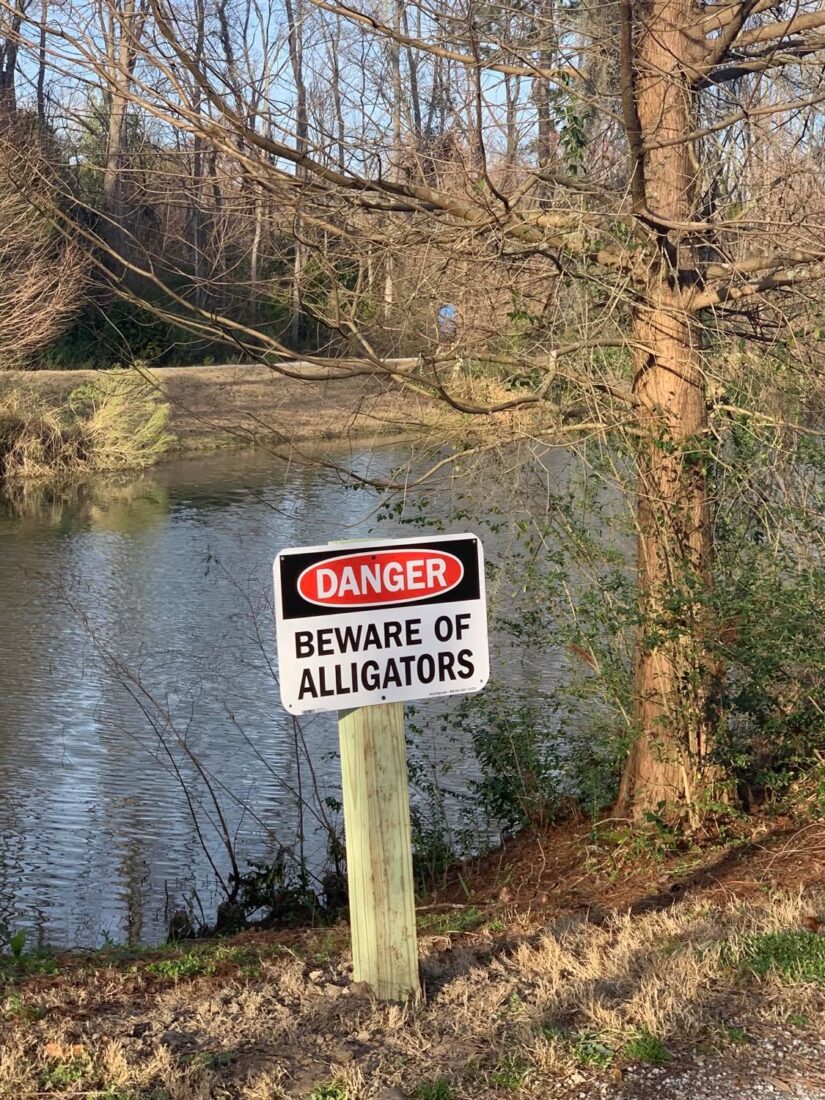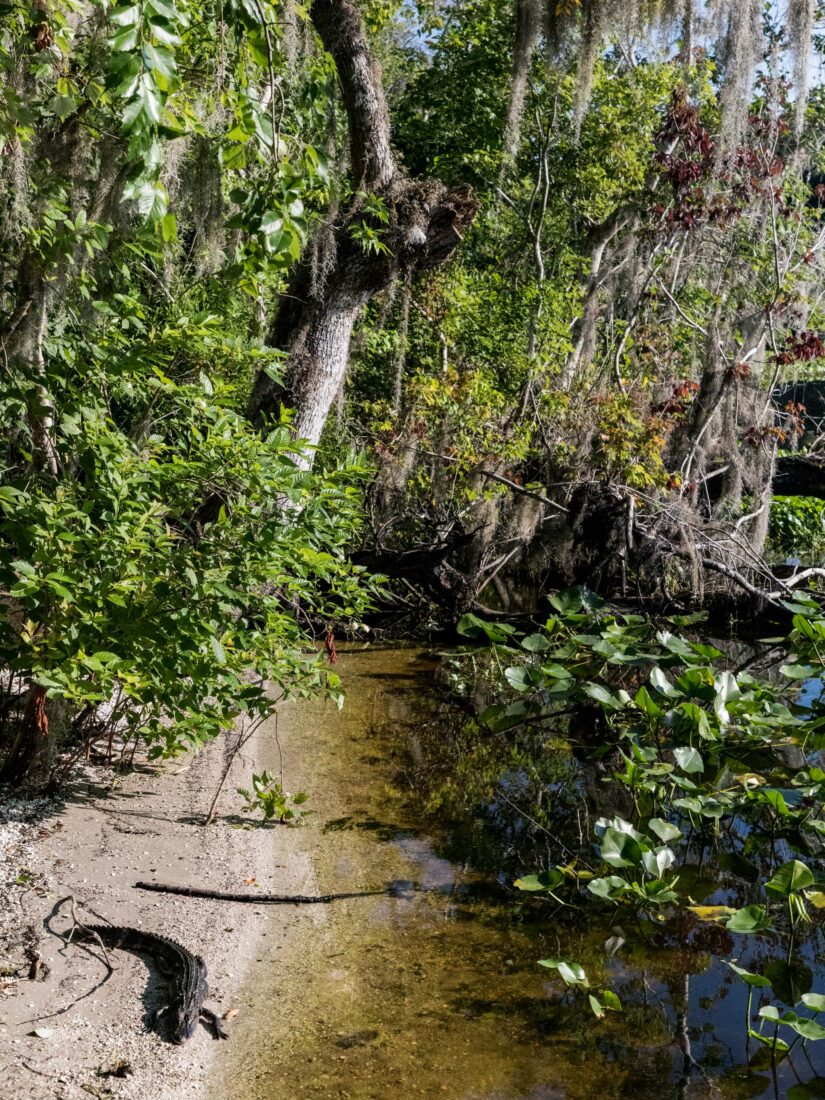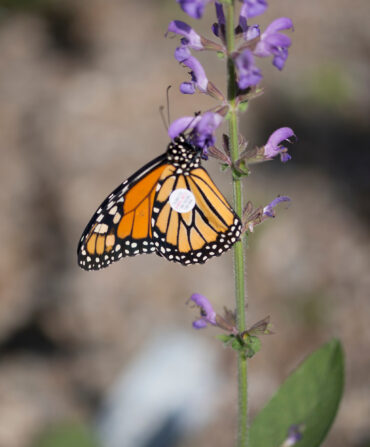Alligators are everywhere. With an estimated population of five million across ten Southeastern states, the large reptiles can sometimes seem like lawn ornaments. But recent headlines are a reminder that they are not to be trifled with. Their mating season is April through June, and naturally they are feeling a little more frisky these days.
That said, Kara Nitschke, an alligator biologist with the Georgia Department of Natural Resources’ Wildlife Resources, says alligator attacks on humans are incredibly rare. In fact, the risk is 1 in 3.1 million in the gator-heavy hotbed of Florida alone. But complacency can lead to disaster. How exactly should one stay on guard? Nitschke has tips.
See Ya Later, Alligator
It’s important to understand where alligators live, which more and more these days is anywhere that’s damp in Louisiana, Florida, Mississippi, eastern Texas, the southern half of Georgia and Alabama, the eastern half of the Carolinas, the lower reaches of Arkansas, and even southeastern Oklahoma. Alligators prefer freshwater habitats, including slow-moving rivers and swamps. But suburbia has grown into these areas, causing gators to have to make due.
“You’ve got to assume any fresh body of water is going to contain an alligator,” Nitschke says about these parts of the country. “Farm ponds, golf-course ponds, even a four-foot puddle.” But as every barrier island resident knows, alligators will occasionally swim out into the surf to hunt, too. “You have to be vigilant. If you’re near water, there almost certainly are alligators there.” And if you see one gator floating on the surface, assume he has friends nearby.

So what to do if you encounter one? Keep your distance from the shoreline, and don’t give the animal any reason to feel frightened. “Alligators don’t see humans as prey animals or a source of food. We’re not on the menu for them,” Nitschke says. Where people get in trouble is when an alligator feels threatened. “His goal is to eat and protect himself, and he’ll defend himself lethally if necessary.”
Prey Tell
You may not be prey, but your Pomeranian could look like a tasty snack. Nitschke’s own French bulldog is a constant reminder, she says, of how important it is to keep an eye on pets when out for a walk by gator-inhabited waters, which can include retention ponds. Don’t let your pet go sniffing near the water’s surface or pop by for a refreshing drink. “Unless you have a hunting dog, your pet is most likely unaware of its surroundings,” she says. “If it’s a hot day and they plop in the water to cool off, they’re in the alligator’s territory and they’re fair game.”
If a gator chooses to attack your pet, Nitscke says, “You have to be ready to make the right choice.” You or the dog. Those who play the hero will likely end up hurt or worse.
An abundance of caution should also be applied to small children, naturally. Nitschke says kids should never be allowed unaccompanied near waters that could contain gators, nor permitted to splash at the water’s edge, an action that under the surface may look like the ripples of wounded prey to an alligator.
Oh, Snap
The best defense is a good offense, meaning just avoid alligator-infested areas in the first place. Barring that, if a gator springs at you, Nischke says the best thing to do is jump out of its way.

“Try to jump out of the line of the direction that the alligator is coming because typically there will be an initial push forward to grasp whatever it’s aiming for,” she says. “But they’re not going to be quick enough to do a 360-degree turn in the air to reposition.” If you move out of the line of fire, then you can run and escape. “Gators are weak in opening their mouths but very strong once they clamp,” she says. “If they grab you, they’ve got you.”
Mutual Respect
“By and large, alligators are afraid of us,” Nitschke says. Most often a gator will back off if it comes into contact with humans. However, larger “teens,” as she calls them— that includes gators in the five- to seven-foot range—“are angsty and moody and a bit more aggressive,” and they may display a lack of fear of humans. If you see one of these, or what those in the wildlife biz call a “conflict alligator,” call your local Department of Natural Resources. They will come remove the predator and rehome him somewhere safe for everyone. Nitschke has handled these nuisance calls for more than a decade. “We once removed a nine-footer from a median next to a Savannah outlet mall,” she says. Her team and others like it across the Southeast have the tools and resources to take care of the problem.
Ultimately, Nitschke says the best way to prevent an incident is to remember they were here first, and they’re just trying to survive in a human-dominated world where development has encroached farther and farther into gator country. “It’s not like we can put up a public notice that says ‘Alligators: Please Vacate,’” Nitschke says. Instead, we have to learn to live with each other, and that requires a healthy amount of fear and respect.
“We are the cause of conflict,” Nitschke says. So give them space, stay vigilant, and keep your pups, tots, and yourself well out of gator-run water at all times.








